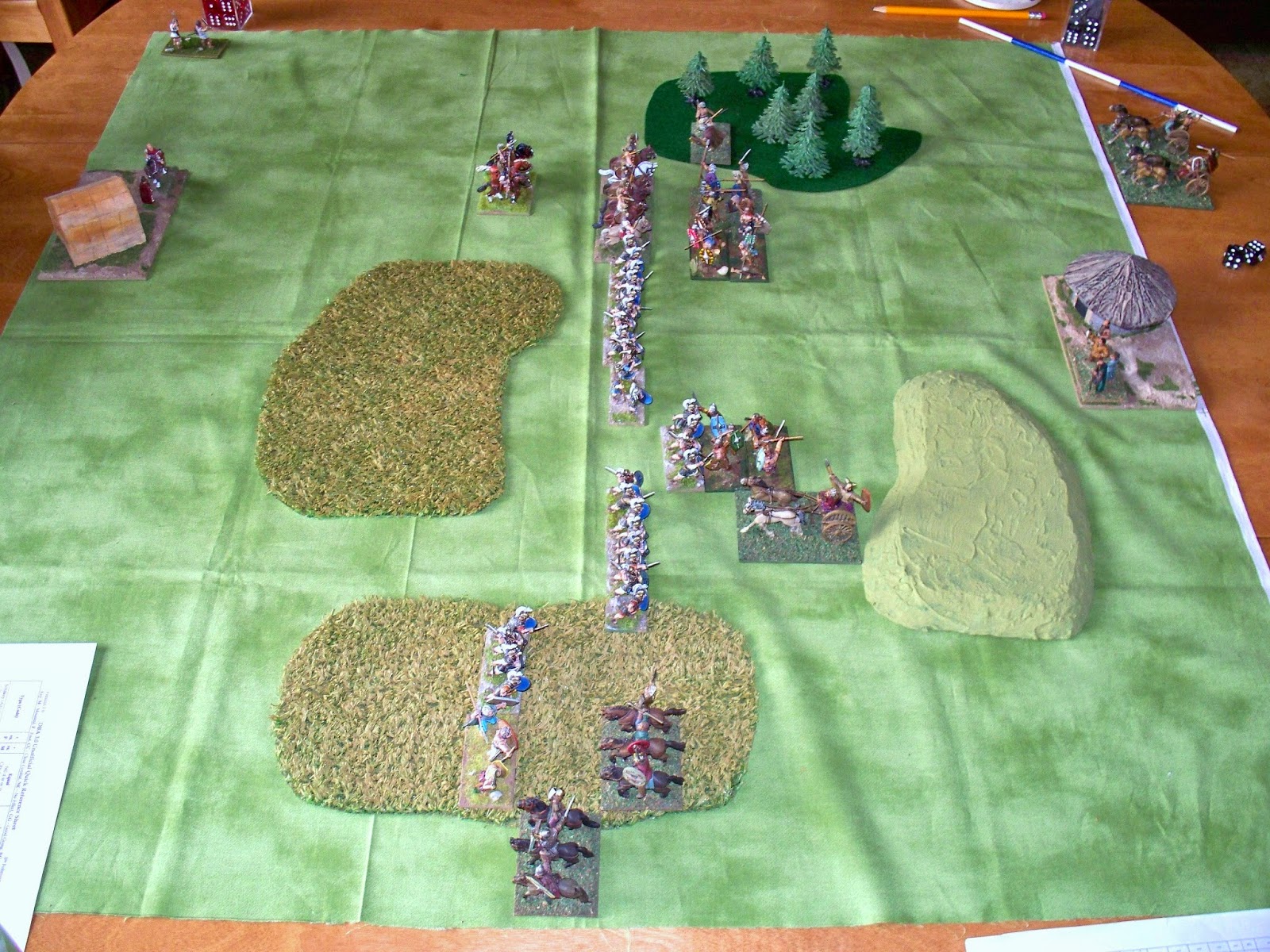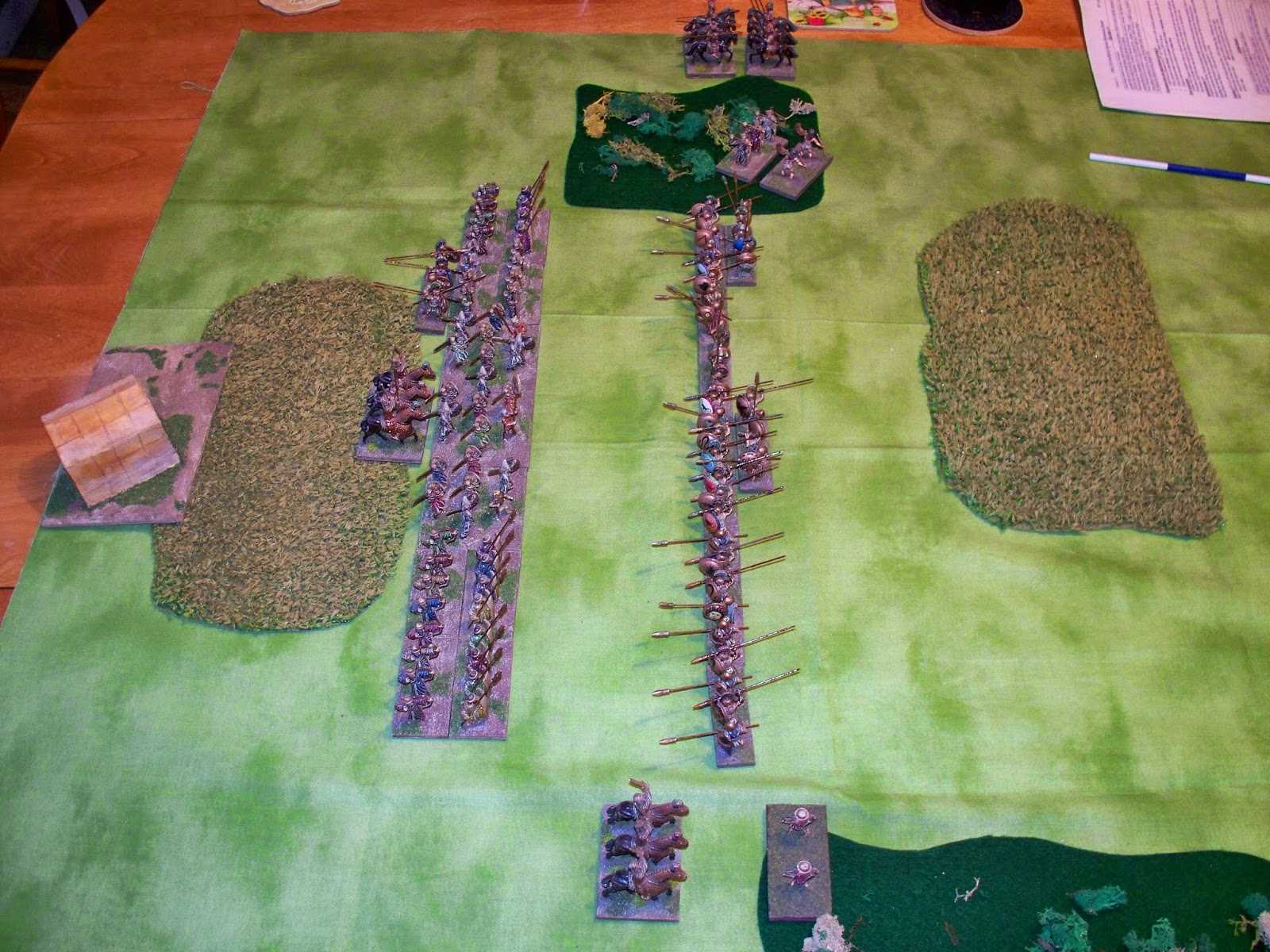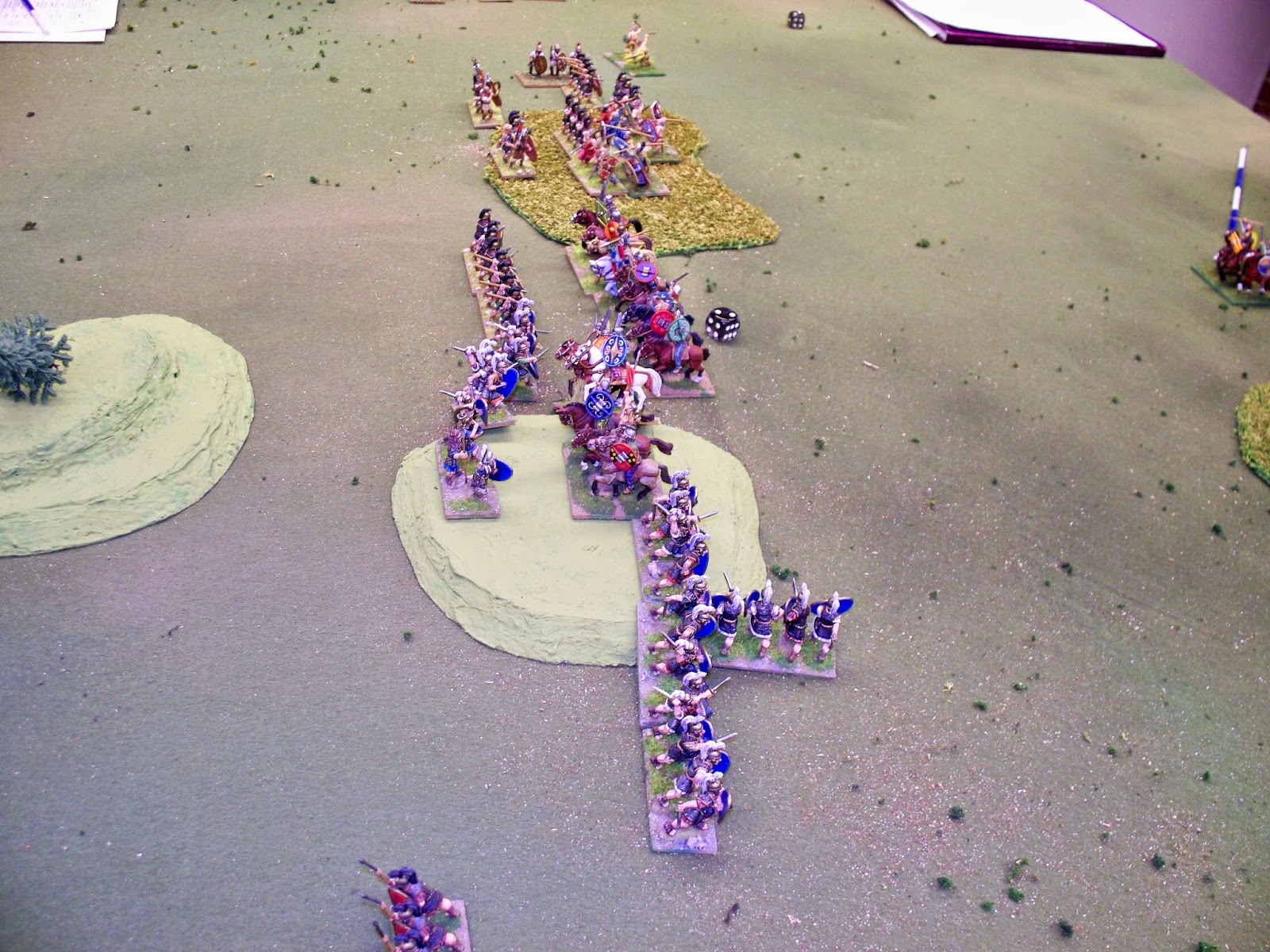Over Christmas and January, I re-based some old Ral Partha miniatures for DBA 3.0: Early Achaemenid Persians and Early Hoplite Greeks. I have enough to do any army in the lists. I finally got to use them & see how they fare against each other.
The order of battle was as follows:
Early Achaemenid Persians I/60c 539-420BC:
1 x Cv (General)
2 x Cv
3 x 8Bw (Sparabara)
1 x 8Bw (Immortals)
1 x Sp (allied hoplites)
1 x 3Ax (Armenians)
3 x 7Hd (Levy)
Early Hoplite Greek - Later Athenian Hoplite Army I/52f 540-449BC
1 x Sp (General)
8 x Sp (hoplites)
1 x Cv (Thessalians)
2 x Ps (javelinmen & bows)
Above is the deployment. The Athenians were the attackers. The terrain features included two plough, and single scrub and woods areas. The Persians (left) deployed with their sole hoplite element in the front center, flanked by Sparabara and Immortals. Armenian auxilia was on the right, and Persian cavalry near both flanks. Levy horde infantry is in the rear. The Athenians deployed with hoplites in line, with psiloi on each flank. The General's element, another spear and a cavalry element formed a reserve line. Camps for both armies are in the center, rear (Roman & Gallic camps until I build Greek & Persian ones).

Above shows after turn 1. The Persians moved first, the plough was good going based on the Persian's first pip roll. The Persians moved their Armenians into the scrub on their right flank, moved cavalry up to cover both flanks of the Sparabara (and a horde element behind the cavalry on the left). The Athenian hoplite line moved forward, with the psiloi moving to both flank terrain pieces.
Above shows after turn 2. Persian distant shooting was largely ineffective, as no hoplite recoils are seen. The Persian auxilia and Greek psiloi are facing off against each other in the scrub below. The Athenians have moved their lone cavalry to support the psiloi on their left.
Above shows after turn 3. The Armenian auxilia has destroyed the Athenian psiloi in the scrub. The Thessalian cavalry has moved up to prevent a flanking move by the Armenians. On the Athenian right, the Athenian psiloi bows are in the wood; the Persians moving a horde element to block them from exiting. The Persian distant shooting is still not effective as no recoils are seen.
Above shows after turn 4. Persian distant shooting by the Sparabara and Immortals did recoil a couple hoplite elements in their bound, but pips allowed the Athenians to reform their line and advance closer to the Persian line.
Above shows the end of turn 5. The Athenian line crashed into the Persian line. In the ensuing melees, a double Sparabara element was destroyed (gap in the line above), and all Persian infantry has recoiled from the Athenians, with a single Persian cavalry element still locked in melee. The first double element lost counts as 2 lost, the Athenians are winning 2 to 1. Hoplites (spear) get a +1 for flank support by another spear element, which simulates the shield wall of the phalanx.
Above shows the end of turn 6. The Athenians have destroyed the Immortals double element, creating a larger gap in their line, necessitating the Persian General's cavalry element to cover the gap. 3 Athenian hoplite elements have recoiled from distant shooting or melee. The Athenians are now winning 3-1.
Above shows the end of the game on turn 7. The Persian allied hoplite in the center has been destroyed, taking the Persians to 4 elements lost and ending the game. The Armenians unsuccessfully tried emerging from the scrub to attack the Thessalian cavalry (below).
Post Game discussion: The Athenian hoplite battle line proved very tough, fighting melee at +5 with flank support. The Persian distant shooting was largely ineffective, as they shot singly at hoplite elements instead of concentrating fire on one or two. It should be noted that the Persian horde suffered no losses, fight foot at +3, and when destroyed they don't count towards losses for victory conditions. In the next game, the Persians may want to put the horde in the front line to absorb losses while the Sparabara concentrate fire. Also, the terrain on the flanks restricted the Persian cavalry from taking advantage of their numbers vs the Athenian cavalry (3 to 1) and made it difficult for the Athenian hoplite battle line to be flanked .
.jpg)
.jpg)
.jpg)
.jpg)
.jpg)
.jpg)
.jpg)
.jpg)
















































